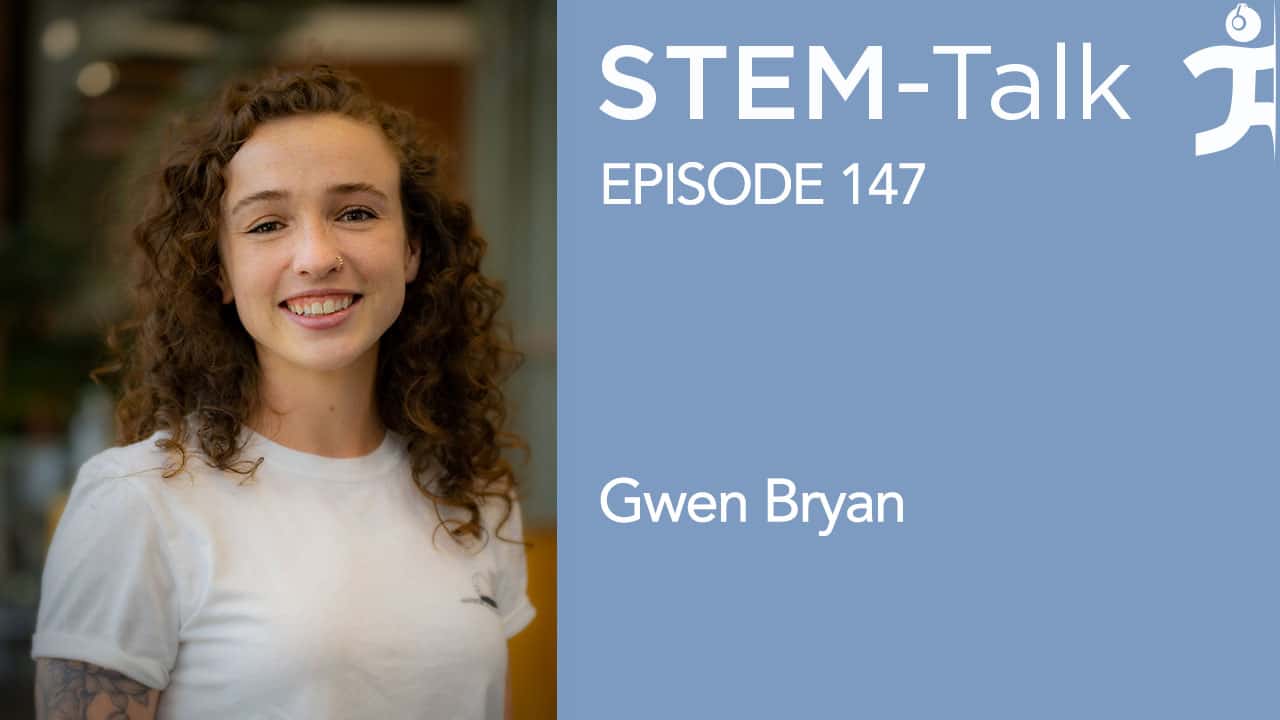STEM-Talk
Episode 147: Gwen Bryan talks about advances in wearable robotic devices and exoskeletons
// Jan 4, 2023

Today’s interview is with IHMC’s Dr. Gwen Bryan, a research scientist who investigates wearable robotic devices aimed at augmenting human performance in clinical, occupational, and military applications.
She is particularly focused on maximizing the benefits of powered exoskeletons. At IHMC, Gwen leads the exoskeleton team, which is developing a novel augmentative device that continues IHMC’s research on mobility devices for people with spinal cord injury. The team also is researching a powered exoskeleton to aid government employees whose work involves nuclear site remediation.
Gwen and her team’s effort, which utilizes a human-centered research approach, is uniquely situated to expand exoskeleton research and technology because of the expertise and collaboration that’s available among IHMC’s robotics and human-performance research groups.
Gwen joined IHMC after completing her Ph.D. in the Stanford Biomechatronics Lab. Outside of work, Gwen enjoys soccer, weightlifting, painting and snowboarding. She also is a dog mom to two very adorable shelter dogs, Bandit and Oreo.
Show notes:
[00:02:32] Dawn asks Gwen what it was like growing up in Albuquerque, New Mexico. [00:03:02] Dawn mentions that it seems science was a part of Gwen’s life early on. Dawn goes on to mention that Gwen’s father was an engineer, and her mother was a nurse and asks how her parents having these backgrounds influenced her. [00:03:35] In addition to a science background, Gwen’s mother is also a clarinetist who instilled a love for the arts in Gwen. Dawn asks Gwen about her painting and how art benefits other aspects of her life. [00:04:17] Ken asks Gwen what she was like as a kid. [00:04:59] Ken asks Gwen to talk about a rafting trip she took with her cousin through the Grand Canyon. [00:06:27] Dawn asks Gwen how chocolate chip cookies factored into her third-grade science fair project. [00:08:04] Dawn mentions that fitness became a part of Gwen’s life following an injury she had as a senior in high school. Exercise, particularly weightlifting, helped alleviate her back pain. Dawn asks Gwen what her fitness journey taught her about her body, and ultimately, how that experience gave her insights into the work she does today. [00:09:16] Ken asks Gwen how she chose to go to the University of Texas in Austin. [00:10:38] Dawn mentions that Gwen transferred to the University of New Mexico for her undergraduate work. Dawn asks Gwen what motivated her to apply her interest in mechanical engineering into robotics. [00:11:28] Ken asks Gwen what was involved in her transfer from the University of Texas to New Mexico. [00:12:34] Ken asks Gwen what led her to the Stanford Biomechatronics Lab. [00:13:38] Ken asks Gwen to talk about her internship with the Sandia National Research Labs. [00:14:40] Dawn shifts to talk about Gwen’s current research focus on wearable robotics, particularly exoskeletons, mentioning that when the public hears this term most people generally think either insect exoskeletons or Ironman. Dawn asks Gwen to describe the exoskeletons she works on. [00:15:25] Dawn mentions that the potential uses of exoskeletons to help people with limited or no lower-limb mobility seems, in some respects, clear, but the application has been limited, and asks why that is. [00:16:40] Dawn asks what some other applications of exoskeletons are that are important to know about. [00:18:35] Ken mentions that during Gwen’s doctoral work at Stanford, she developed the first cable-driven exoskeleton to assist all the three leg joints — hips, knees, and ankles — and asks Gwen to talk about how that design was developed and what made it special in the exoskeleton field. [00:20:10] Ken explains that Gwen’s work also developed novel control systems for exoskeletons by using feedback from real-time physiological measurements of the user – coined human-in-the-loop optimization (HILO). Ken asks Gwen to talk about this strategy, and why it is an important innovation. [00:21:56] Ken asks Gwen to talk about what she learned about the impact of exoskeleton assistance on walking economy when assisting the hips, knees, or ankles individually versus simultaneously. [00:22:58] Dawn asks if the multi-joint strategy depends on the walking task, mentioning that it seems as though demands change for different joints when walking faster; or up and downhill; or carrying load. [00:23:49] Dawn explains that the laboratory emulator approach seems to have led to many fundamental findings. Dawn goes on to ask, however, about the limitations of assisting people in the real world in an approach that has users stuck on a treadmill and in the lab. [00:25:02] Dawn asks if exoskeletons are a ‘one-size fits all’ technology, or if they need to be customized to each individual. [00:26:08] Ken mentions that Gwen is involved in a couple of exoskeleton projects at IHMC, and asks first about the Eva project. [00:28:16] Dawn asks what other applications Eva, or exoskeletons in the same vein, might have in rehabilitative or therapeutic settings. [00:29:01] Dawn asks about IHMC’s Quix, another exoskeleton that Gwen is working on, which has been primarily used to help people with lower-body paralysis gain movement. Dawn goes on to mention that the team has been looking into rehabilitative applications that Quix could serve in as well, and asks Gwen to discuss new developments with this project. [00:31:27] Ken asks Gwen to share some final thoughts on exoskeleton and what she sees as the grand challenges facing exoskeleton development. [00:33:18] Dawn asks about Gwen’s passion for cultivating interest in STEM among girls and young women and why that is so important to her. [00:34:59] Gwen talks about some of the mentors in the field that helped her along the way. [00:36:11] Dawn asks Gwen about her two rescue dogs, Bandit and Oreo, to close the interview.Links:






